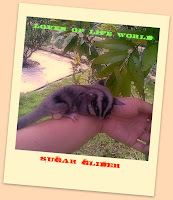The Leopard gecko (Eublepharis macularius) is a nocturnal ground-dwelling gecko found in the deserts of Pakistan, northern India, Afghanistan and parts of Iran. They are one of the very few gecko species which possess eyelids and lack toe-pads.
Over the years, due to various reasons, leopard gecko has become established in captivity, particularly in the pet industry. Why you may ask? Well, read on for some of the answers:
Size – If it is a manageable reptile/lizard you crave, then there are no better reptiles come to mind except for leopard geckos. They stay small, do not grow large and do not defecate like a horse. They don’t require much space and some keepers even keep one or two in a 10-gallon terrarium tank and thrive. They are also designed to defecate at one spot. Such spot is known as the defecatorium. Thus making cleaning easier compared to any other animals.
Feed – Leopard geckos feed on insects such as mealworms, superworms or crickets, which are not difficult to acquire from your local pet stores or fish shops. They are also cheap or less expensive compared to cat food for cats or even mice to feed snakes.
Silent – Just like most reptiles, leopard geckos stay quiet. They won’t bark like a dog nor trumpet like an elephant. They are hardly noticeable in your home.
Status – Leopard geckos are not considered as endangered or protected, locally nor internationally. They are NOT listed in the Convention on International Trade in Endangered Species of Wild Fauna and Flora (CITES) nor the Malaysian Wildlife Protection Act (WPA) 1972. Therefore, they are not subjected to any special permits to be kept, bred or sold in most areas except for odd places such as Australia or Singapore.
Cool Factor – With such array of mutations and calm demeanour, leopard geckos are simply cool to look at. Due to the same reasons, they are also highly addictive, just like drugs to a junkie.
The above are just some examples that make leopard geckos to become one of the mainstream reptiles to keep and breed throughout the world for decades. I assure you that there are more than meets the eye concerning this wonderful animal. But in order to know personally, I would suggest you to get one and experience the feeling yourself.




















